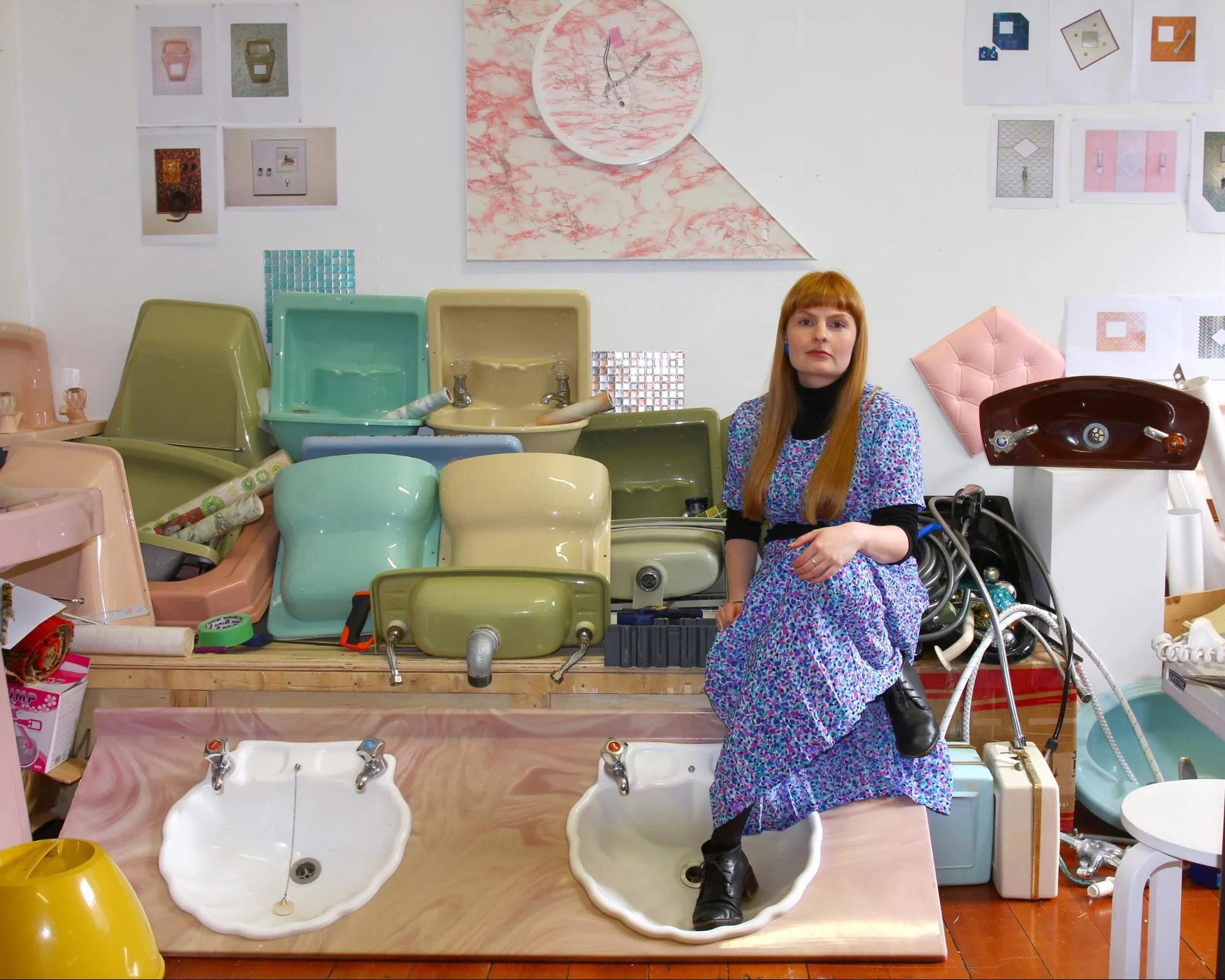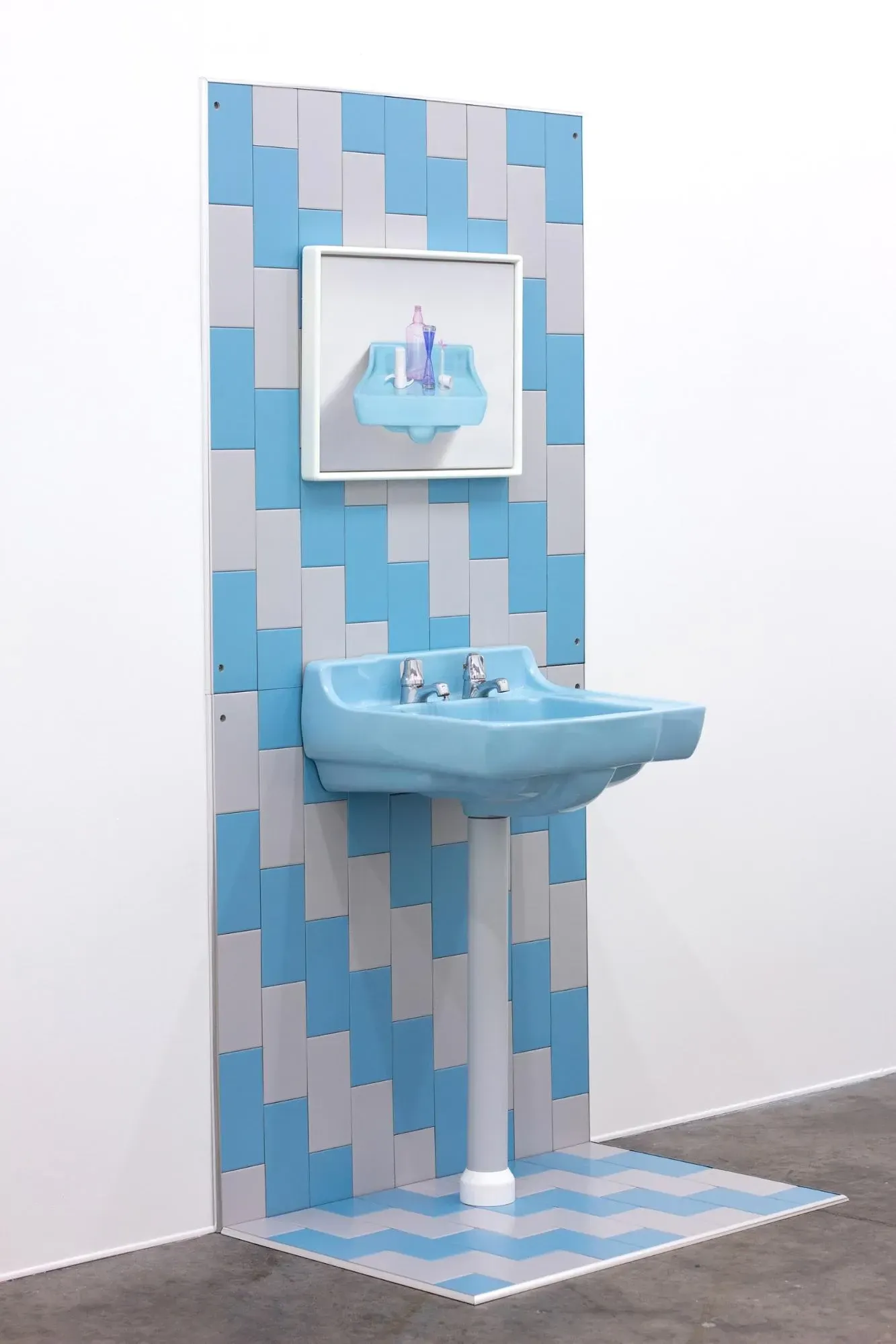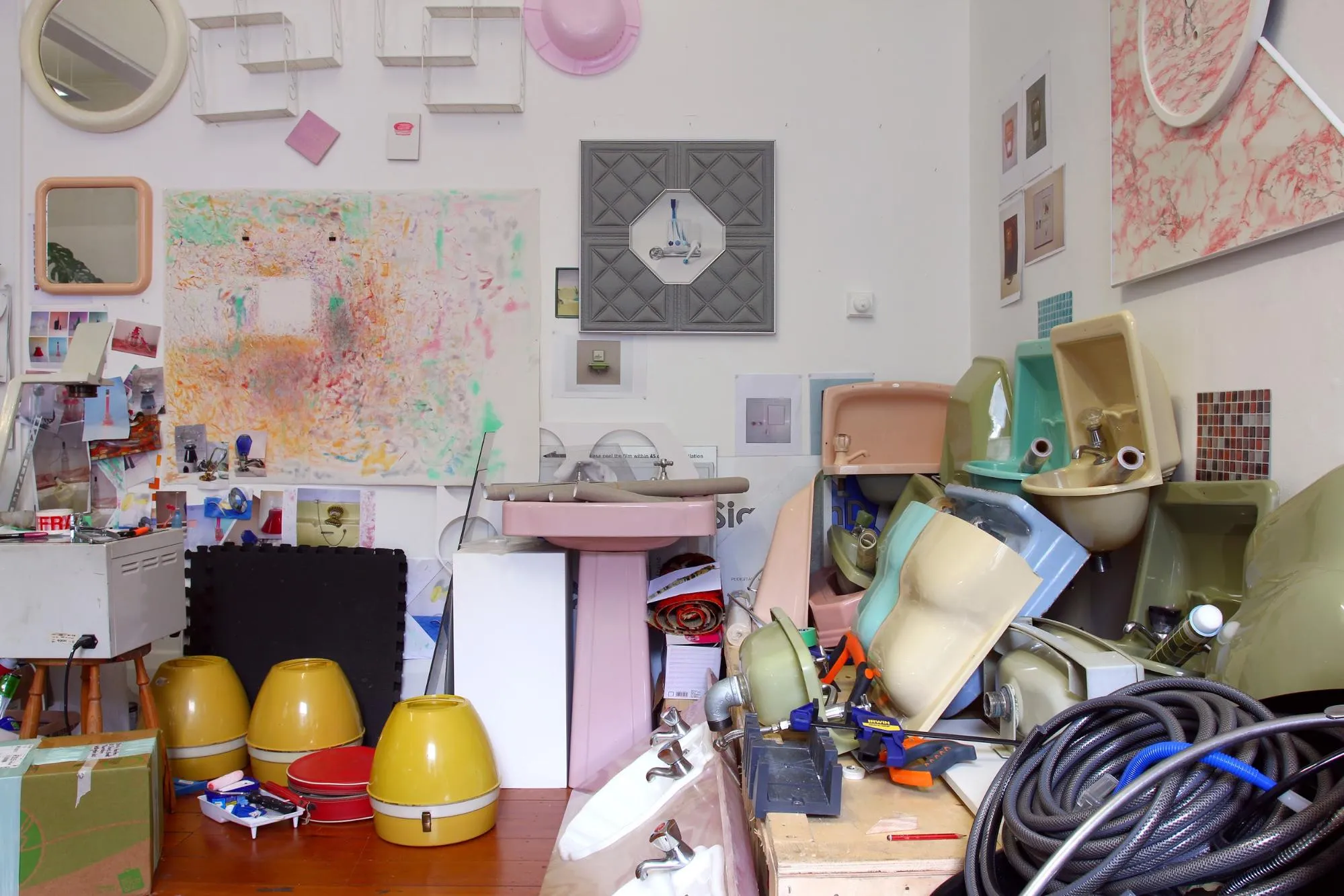Pushing Boundaries
Written by
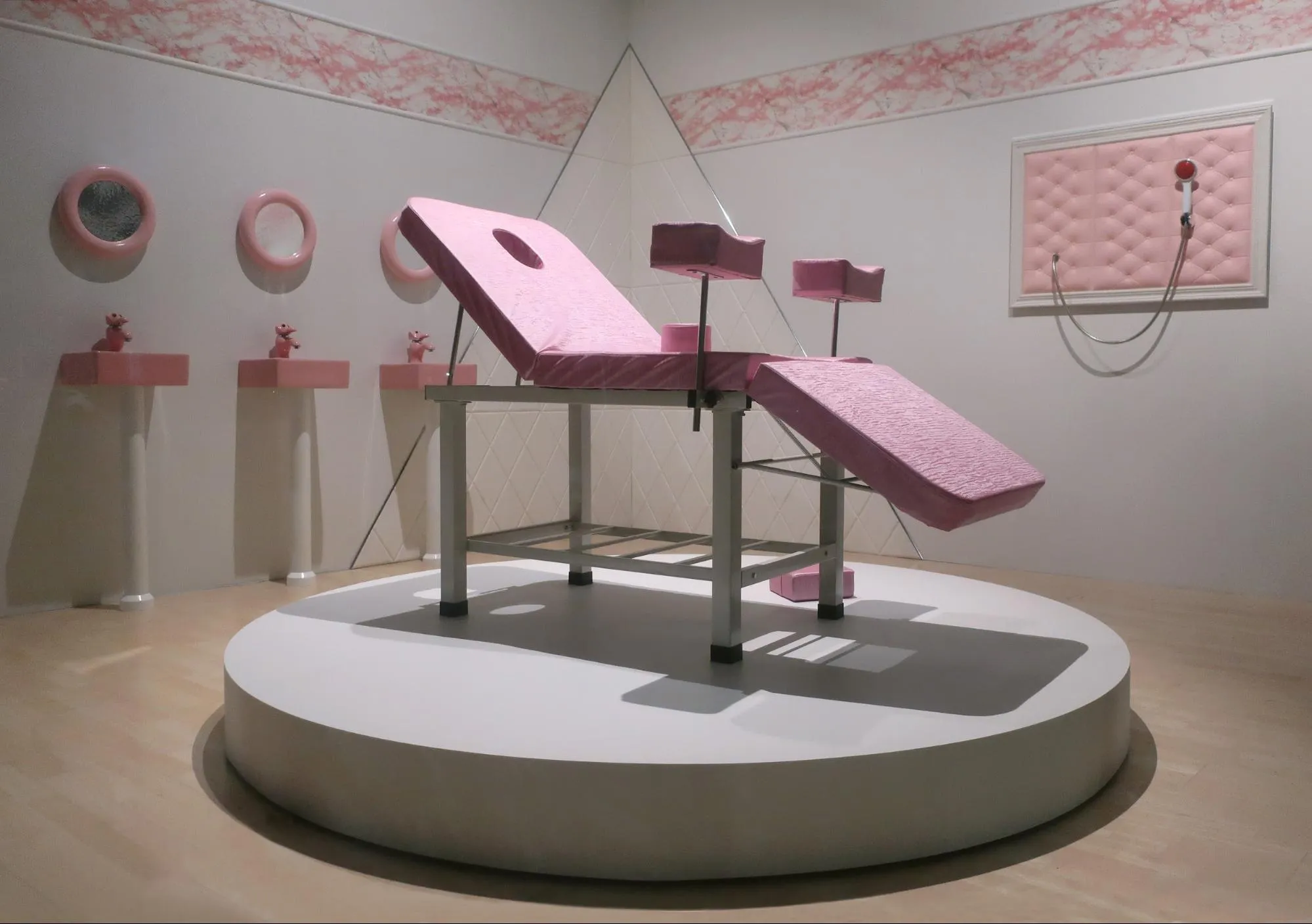
Within the realms of Emily Hartley Skudder’s artwork, there is power in pastel and fortitude in femininity.
Since graduating from Ilam in 2012, Hartley Skudder has established herself as a vital voice in contemporary New Zealand art, exhibiting in solo and group exhibitions up and down the country and internationally.
She describes her art as celebrating “the artificial ordinary” that merges painting, assemblage, sculpture and installation.
“I have a grounding in painting, but that has been heavily influenced by collecting. During art school, I would collect found objects and miniatures which I would photograph, and they would then appear in paintings.
“Now my collecting has exploded into hoarding,” she laughs. “I’m interested in how objects exist in the world, so I spend a lot of time looking online, going to recycling stores…I collect faster than I resolve now and there are more sculptural and installation aspects to my work, so I am exploring how I can integrate my painting practice within it.”
Feminism to the forefront
Hartley Skudder’s work references a strong local and international art historical lineage. The perfect uniformity of her output feels nostalgic, with a hint of Uncanny Valley unease. It evokes Yvonne Todd, Jeff Koons, Judy Darragh and Laurie Simmons. But Hartley Skudder feels anything but derivative, perhaps due to her incorporating still lives into her work.
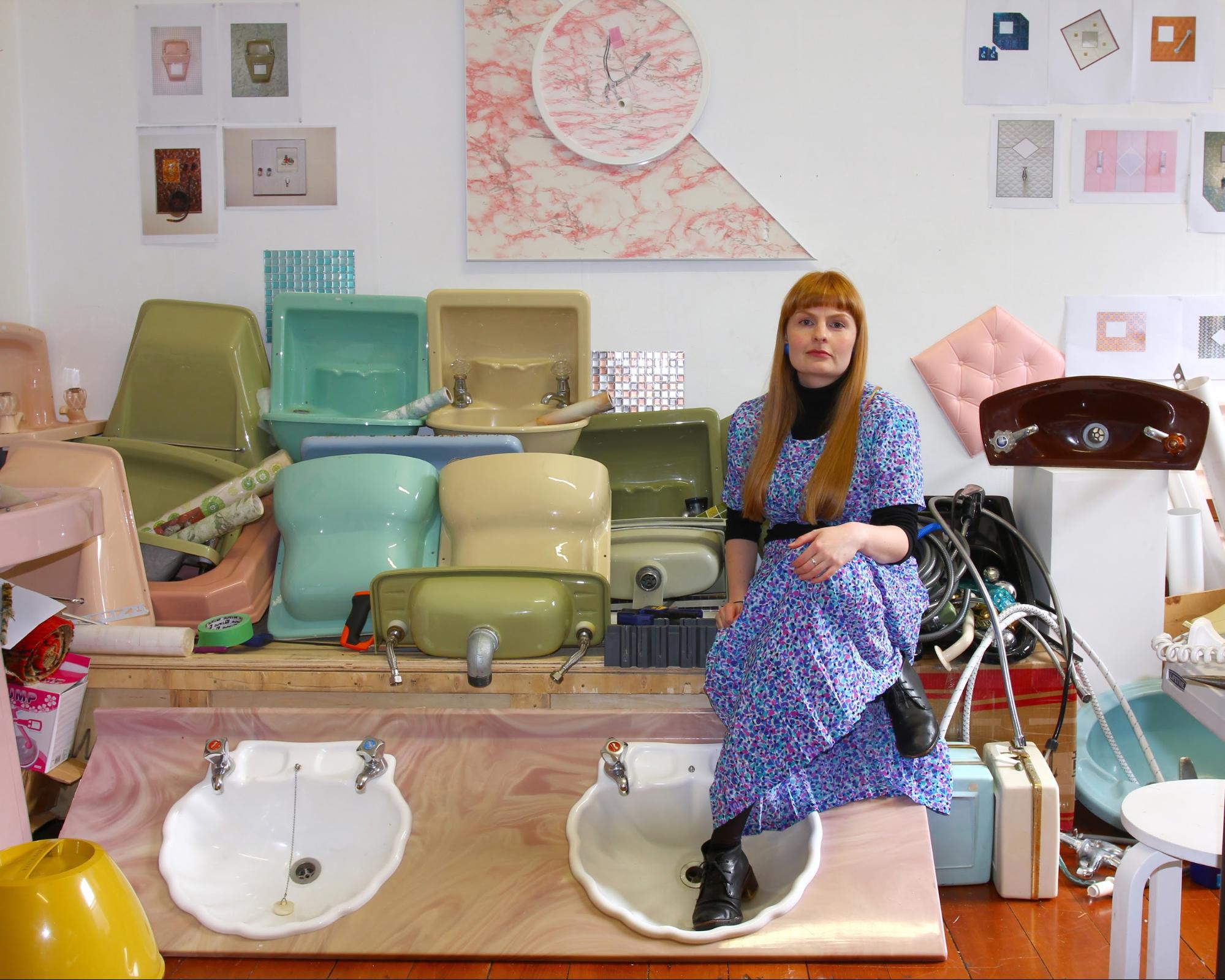
Emily Hartley Skudder in her studio.
Within Western Art History, still lives (a bowl of fruit, a vase of flowers, the interior of a room) were considered the lowest genre in the hierarchy of painting. Due to the fact it was merely decorative, it was the only genre that women could paint, a fact that Hartley Skudder is very aware of.
By combining her still lives with soft tones and gaudy kitsch, Hartley Skudder offers a wry flash of humour that underpins a sharp commentary on historical and contemporary gender constructs.
“My work has always been feminist but I’ve become more overt over time,” she says. “[There was a period] where I moved away from it because I had that classic thing where I didn’t want my work to be overpowered by it…but then I said, ‘that’s ridiculous’.
“It is frustrating, if you want to say something and you feel like you’ve got to pull back because you’re worried about how the audience will respond. Now, I’m really excited about bringing feminism to the forefront and using quite loaded objects but making sure that there’s a lot of tongue in cheek humour and nostalgia.”
Speaking out
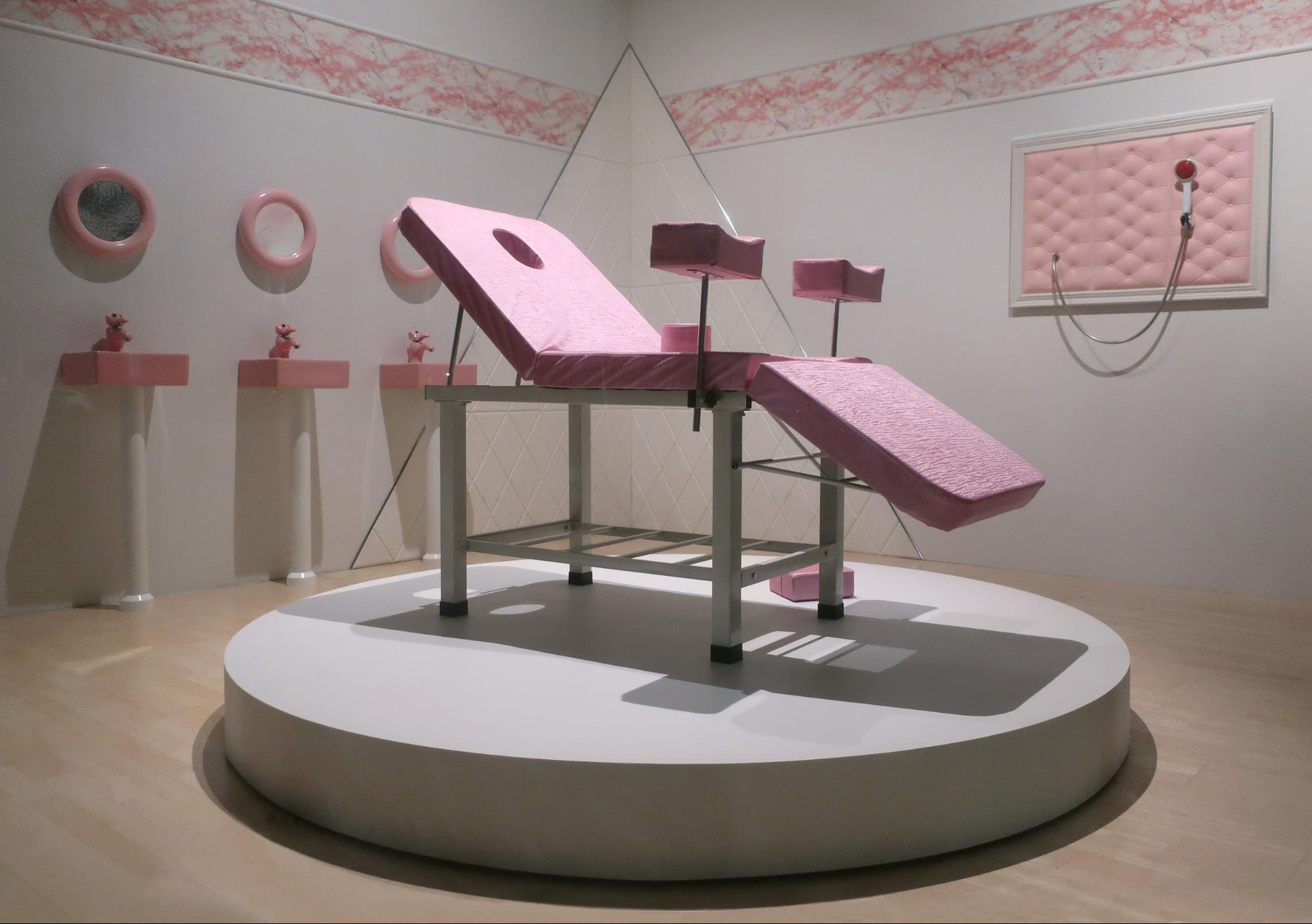
Petting Aggression (2020) Emily Hartley Skudder.
Her soft pastels most notably spoke volumes when she used her art to address the overt sexism and abuse of power by another international artist during Hartley Skudder’s first international residency in China. She recalled and called out her experience in an excellent piece penned for The Pantograph Punch. (Content Warning: representations of sexual abuse).
“It had such a huge impact on me and my practice,” she says. “It hasn’t been all negative, but it was so hard feeling like I was the only person going to do something about this artist who was being so inappropriate. I felt this weight, like I was going crazy and really like I was being silenced and humiliated.
“There were instances where I was seen as a troublemaker. I realised ‘this is what it’s like to speak out’. We really need to support people – especially if we are privileged like I am. We need to use our platforms to amplify people’s voices.”
Child’s play
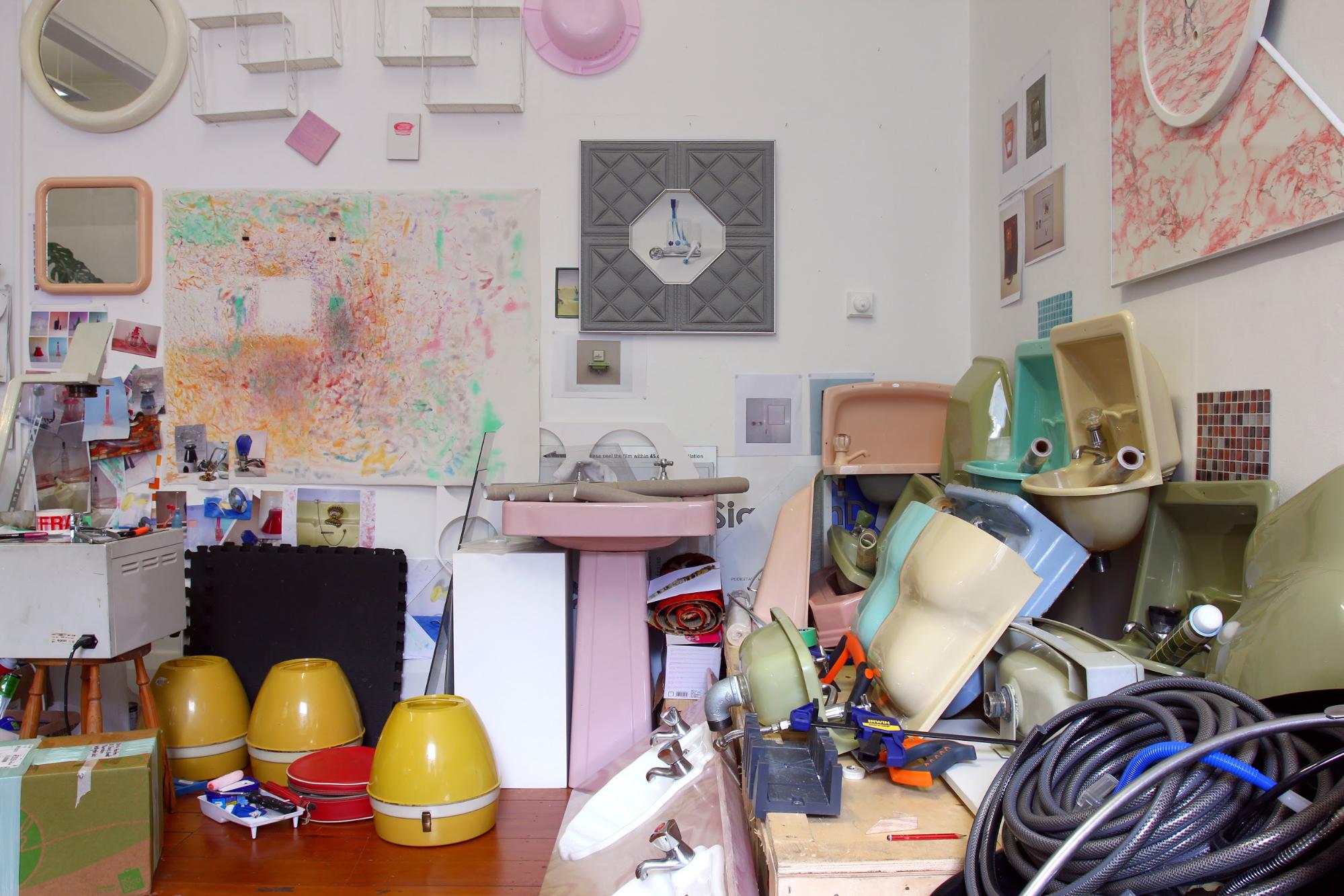
The chaos of creativity inside Emily Hartley Skudder’s Studio.
For Hartley-Skudder, her childhood “obsession with miniatures and dollhouses, Polly Pocket and Sylvian Families” helped to form the basis of her themes and processes. “I have an amazing family who saved them all and I began photographing my collection at art school,” she recalls.
“I began to think about the function of toys and how they are used for the socialisation of children; what girls play with, what boys play with and how silly it is that society prescribes gendered space and toys to people and some major themes within my oeuvre started there.”
She pinpoints an exhibition she completed fresh out of art school as another key moment in her career to date. “I did an exhibition in a commercial show home….growing up I used to escape into this fantasy world of dollhouses and their tiny replicas of decorations or furniture and I saw model show homes as blown-up dollhouses - they were synthetic yet homely.
“So I researched this housing development and show homes swapped out generic paintings to paintings that matched the décor. It was huge in terms of how it came together fresh out of art school, but it really solidified what I wanted to do in terms of my work - bringing domestic installations into gallery spaces. It taught me to think big and showed me my potential.”
Keep it clean
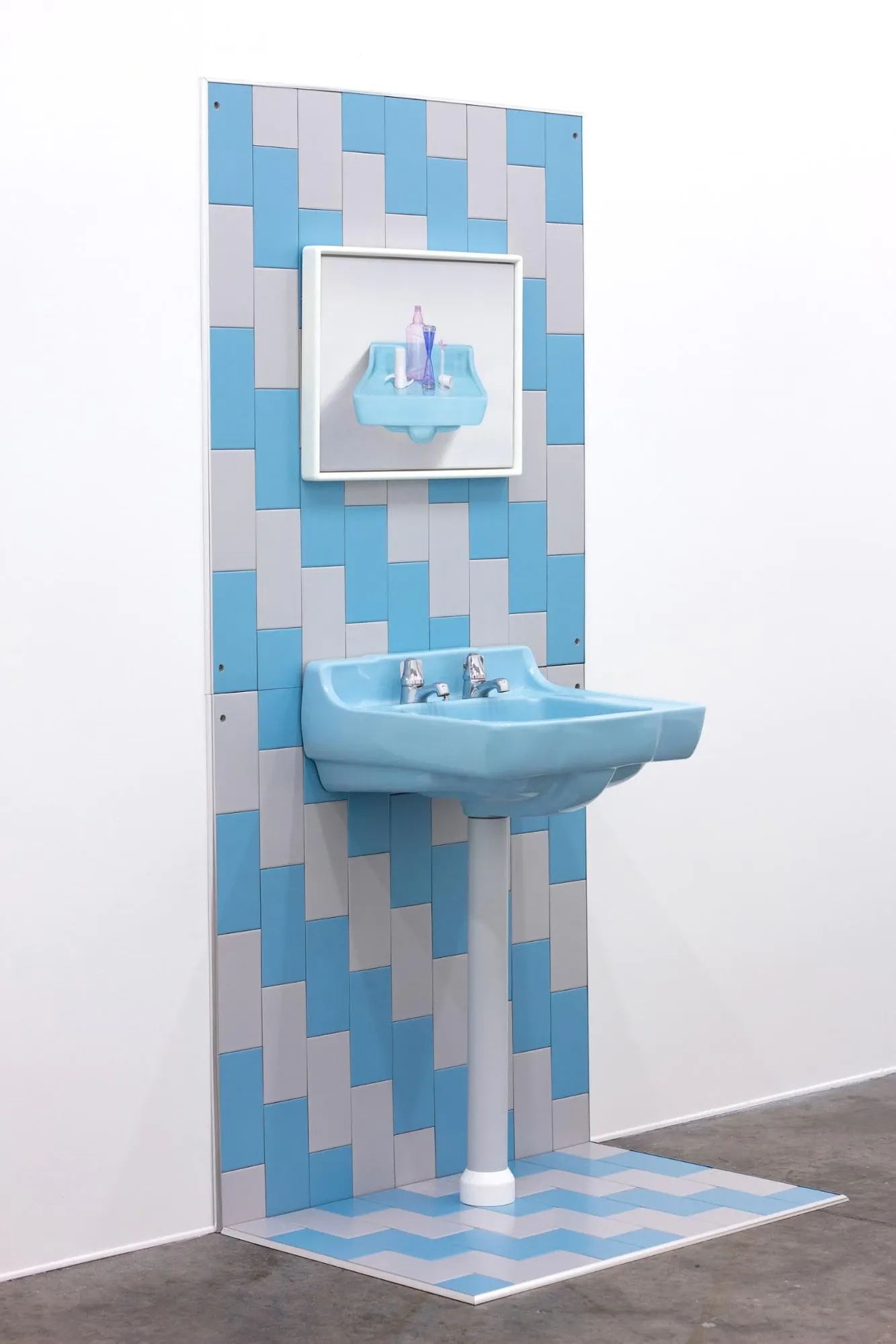
Miss Powder Fresh (2018) Emily Hartley Skudder.
Currently, Hartley Skudder is “working through new ideas and applying for funding – I have a lot of different ideas for projects that I am trying to untangle and working on showing in New Zealand.”
Her ongoing series focusing on bathrooms has taken on a whole new meaning in a post-COVID world.
“I was using bathrooms to explore gendered spaces along with using soap dispensers, oxygen masks and slightly creepy clinical objects. But now these all have a double meaning – it goes to show that the meaning behind your work doesn’t remain static and you don’t necessarily have control over how it’s interpreted.”
As a young artist, Hartley Skudder is still “trying to realise how to work – I need to remind myself to work within my means….I have these big ambitious ideas, but I don’t know how they are possible in terms of time and storage.
“Being an artist is quite an unstable existence – I still have a part-time job and any art I sell is a bonus…It’s hard when I throw everything at a project – I borrow money and then there’s a big crash and I think to myself ‘this isn’t sustainable, how can I keep doing this’ – that bit is never fun, but it keeps you honest.”
Despite the precariousness of being an artist, Hartley Skudder urges creatives to “just keep making work. It can be really hard when you’re making work and you’re getting nothing back, but if you look at all the people who stopped making work, just to continue making work is a huge achievement. I need to remind myself as well. Just keep going.”
